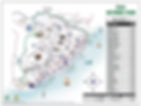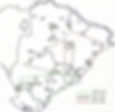
RUHUNA (YALA) NATIONAL PARK
Publications:
Kittle, A.M., Watson, A.C., & Samaranayake, P.K.L. 2021. Edge effects and distribution of prey forage resources influence how an apex predator utilizes Sri Lanka’s largest protected area. Journal of Zoology 314: 31-42.
Kittle, A.M., Watson, A.C., & T.S.P. Fernando. 2017. The ecology and behaviour of a protected area Sri Lankan leopard (Panthera pardus kotiya) population. Tropical Ecology 58(1): pages 71-86.
Ruhuna (Yala) National Park, Block I is situated in the arid southeast zone of Sri Lanka and is presently the nation's most popular wildlife park. At 140 km² it forms the southern extension of a much larger conglomeration of protected areas, the Yala Protected Area Complex extending to the north. This larger complex at 150,937ha is divided into 5 Blocks including a Strict Natural Reserve and two sanctuaries – Nimalawa and Katagamuwa. The Block I landscape is dominated by thorny scrub jungle interspersed with open coastal plains and dotted with natural and artificial waterholes. This terrain allows for varied species composition and good visibility and thus it is easy to understand why the park is so popular. There is ~ 80 km of unpaved jeep track which allows access to the entire Block and it is home to all of this island’s megafauna – elephants, sambhur, buffalo, deer, bear and leopard - as well as a virtual paradise for birdlife.
The extensive road network, sizeable prey base, relative habituation and high visibility of the wildlife made this an attractive initial study site. The WWCT, preceded by The Leopard Project, conducted an initial pilot project here from 2000-2003. Some follow-up work was done in 2009-2011 using data collated from regular visitors to the park in lieu of our absence there due to research commitments in other locations. This data confirmed that a similar pattern to our initial study, of range use and leopard demographics was being maintained within Block I.


The WWCT has ceased work within Block I of the national park, and since 2018 has moved the study to its border areas. For comprehensive results of the completed research from within the national park, please see the following publication. For updates on the current ongoing research in the border areas, please refer to the Ruhuna (Yala) National Park Buffer Zone page.